Age II: The Conquerors - The Koreans Showcase
The fifth and last installment of our Age II: Conquerors civilization showcase looks at the game's only Asian race: the Koreans.
The Koreans Showcase
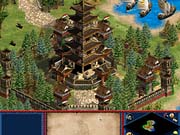
This civilization showcase marks the end of our ongoing look at the new civs in the Age of Empires II expansion pack, The Conquerors. The expansion pack's theme is famous civilizations marked by great conquests. Both prosecutors of conquest, like the Huns and Spanish, or victims of conquest, such as the Aztecs, are depicted in this expansion. Today, we look at the fifth and final side of the expansion set: the Koreans.
The Koreans were in the original Age of Empires pack, with strong infantry and enhanced priests. However, in Age II, the Koreans were one of many civilizations that didn't make the cut. That omission is now remedied, as Ensemble has decided to add another civilization to the thin Asian side of Age II.

"With all the civilizations to choose from, why the Koreans? This is a question that might be asked by some American and European fans but not by anyone familiar with Asian history. The Koreans were major powerbrokers in the Far East. They interacted with and sometimes fought the Chinese and Japanese on numerous occasions. In addition, the Koreans are responsible for one of the coolest military units ever: the turtle ship. Since we only had three Asian civilizations in Age of Kings, the Koreans seemed like an obvious choice for inclusion in the Conquerors expansion," says Greg Street, the game's designer.
There is much to recommend the Koreans in Age II: The Conquerors. Like the Vikings, they have two unique units, a sea unit and a land unit. The Koreans also have strong defenses, with a tower bonus, and a good economic bonus to support such defenses.
In the coming weeks, we will offer a preview of The Conquerors, looking at the new features and the upgrades to the preexisting civilizations. For now, though, we'll take a brief look at the Koreans' history and show their unique bonuses, units, and strategies.
Korean History
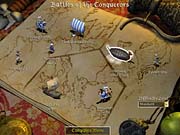
At the same time that Rome fell and the European continent was reduced to the barbaric Dark Ages, the Asian continent was witnessing the growth and prosperity of several empires. In the Korean peninsula, three competing kingdoms struggled for power. The Koguryo lay claim to the north, the Paekche held the southwest, and the Silla controlled the southeast. Of these three, the Silla had the greatest advantage, for it had allied with China. In the 600s, with its bolstered might, Silla conquered its neighbors and established a united Korean empire. It then severed its relationship with China, kicking out its one-time ally. However, its unified rule was short-lived.
In the 9th century, the Silla crown was usurped by the power of local lords. It took the might of the Koryo state to unify the fragmented Korean peninsula in the 10th century. Once again, the Korean empire, which stretched up north to the Amnok River, enjoyed peace. Despite a military coup and transition to military rule in the 12th century, Koryo would not suffer a challenge to its hold on the peninsula until later.
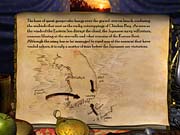
In 1231, the Mongols, victorious in their conquest of China, moved into Korea. The war continued for nearly30 years, but when the Mongolian horde finally quelled resistance in China and could bring its full might to bear on the tiny Korean nation, Koryo surrendered in 1258. However, the Mongols, as they had done in most of their other conquests of advanced civilizations, retained local customs and rules in Koryo, and prosperity returned to the once troubled land.
When the Choson kingdom came to power in the 1400s, land reform, the rise of a new bureaucracy, and the move from Buddhism to Confucianism had already taken place. Taking cues from the dynasties of China, the Choson established strong political and cultural leadership in Korea.
Even in 1592, when Japan invaded Korea, the Choson stood their ground, despite seven years of ruinous warfare. The Japanese apparently thought they could march through Korea into China, but they were repelled by the Korean admiral Yi Sun-Shin, who used the Korean turtle ships to disrupt the Japanese supply lines. Due to Yi Sun-Shin's military genius, Choson and Korea maintained their independence and continued rulership into the 20th century.
Korean Bonuses
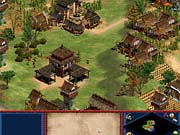
The Korean civilization has modest economic bonuses and some significant defensive ones as well. While not an offensive powerhouse like some of the other Conquerors additions, the Koreans fare very well in staving off the advances of the more aggressive civilizations in the game.
Villagers Have +2 Line of Sight
While this ability seems almost insignificant, in the early game, this ability lets you scout out more territory faster, an invaluable skill when time is of the essence and you need to find resources quickly.
Stone Miners Work 20 Percent Faster
To support their strong defenses, the Koreans need lots of stone. As Age II players will recall, stone is the rarest of resources in the game, making extensive defenses a difficult proposition. Having to devote more villagers to stone mining, and having to hold onto the scarce quarries, is difficult. However, the Koreans have an edge in this case because their villagers gather stone faster, meaning they can erect defenses faster and don't need to devote as many villagers to stone mining. With the Korean bonus for towers, all Koreans will want to build lots of defenses. This bonus makes it much easier to do so.
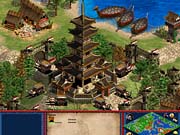
Tower Upgrades Are Free and Automatic
The most noticeable bonus for the Koreans is their free upgrades for their towers. The Koreans can build all towers, including bombard towers. They are one of the rare civs with access to all such defenses. And once Korean players build a watchtower, they need never research tower upgrades. At each age advancement, the next technological step in towers will be acquired for free, and all towers will be upgraded automatically. The most immediate benefit is free and quick escalating defensive power. The secondary benefit is the savings in stone that would otherwise be spent on tower upgrades. This lets Koreans build even more towers, with the confidence that they will always be state of the art for the current age. In addition, once Korean players research chemistry, they can immediately begin building bombard towers, rather than having to research bombard tower first.
Better Range for Watchtower, Guard Tower, Keep
Not only do Koreans have free upgrades and more stone than other civilizations to build towers, but they also have better tower range. In the Castle Age, the watchtower, guard tower, and keep all have +1 to their attack range. The extra shot that can be fired off at maximum range before an enemy unit closes further emphasizes the defensive strength of the Koreans. This bonus gets even better in the Imperial Age, improving to +2 range.
Team Bonus: +1 Range for Mangonels
Although this bonus might not seem that great, it is actually quite useful now that Ensemble has tweaked mangonels in the expansion pack. They are now stronger and faster. With the Korean unique technology, mangonels get +2 range. In team games, the Korean mangonel's range gets better still.
Korean Units and Technology
The Koreans, like the Vikings, get two unique units. One grants them superiority on the seas, while the other provides resilient ranged fire support.
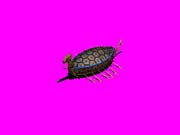
Turtle Ship
This is Age II's ship killer. It has a devastating cannon attack that can destroy ships quickly. The turtle ship's cannon has 50 attack, but it suffers with a six-tile range. Although the poor range means turtle ships are not ideal for shore bombardments (cannon galleons are still best for that), they do make quick work of all ships. Even against fire ships the turtle ship holds up well, due to its heavy armor and fast fire rate. Regular galleons are actually better suited to taking on turtle ships.
Says Greg Street, "The kobukson, or turtle ship, was the first ironclad in recorded history. With only a handful of these armor-plated behemoths, the Korean navy under Admiral Yi Sun-Shin was able to stave off a massive Japanese invasion fleet. In the Conquerors expansion, the Korean turtle ship fills the role of a battleship, since its true purpose is to kill other ships. Turtle ships are slow to build, slow to sail, and quite expensive. But as with Persian war elephants, if you let a Korean build up too many turtle ships, you will have a hard time stopping them. The Koreans rule the oceans."
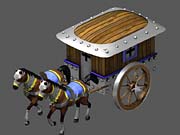
War Wagon
The other Korean unique unit is an armored wagon housing a band of archers. Although the war wagon looks like a siege weapon, it counts as an archer unit and therefore benefits from the archer upgrades, including ballistics, chemistry, and the thumb ring. As a wheel unit, it also benefits from husbandry. As archers, war wagons fare poorly against buildings.
Why did Ensemble choose the war wagon as its other unique Korean unit? Street answers, "Korean history is filled with lots of interesting units that we could have chosen, such as a super horse archer and a powerful early cannon. We ultimately decided to go with the war wagon because we thought [Age II] was missing an equivalent of AOE's elephant archer: a ranged unit with a lot of hit points.
"Armies of archers have an exponential power curve. That is, small groups of archers are pretty pathetic while large groups are downright deadly. The war wagon is no exception. While a group of two to four war wagons could probably be dispatched with halberdiers, the combined fire of 25 to 30 war wagons is difficult to stop. War wagons are vulnerable to halberdiers, camels, and skirmishers, but none of those units really has the hit points to face war wagons in combat for long. Heavy cavalry, such as paladins and tarkans, are your best bet. Leave the champions and arbalests at home. For comparison, 30 war wagons can beat 30 champions or halberdiers and lose only one to two units. Thirty paladins beat 30 war wagons with 50 percent losses."
Unique Technology: Shinkichon
This unique technology grants Korean mangonels a +2 bonus to attack range. This bonus also extends to the more advanced units in the mangonel line, such as the onager. Street explains the benefit in greater detail:
"In Age of Kings, Mangonels were expensive, slow, and died easily. Mangonels are greatly improved in the expansion as they now move faster, hurl their missiles at a faster rate (thereby making it harder for enemies to get out of the way), do extra damage to other siege weapons, and won't auto-fire if they would hurt friendly units. Yet, even with all these changes, we wanted a civilization that could make mangonels and onagers a force to truly fear. Through bonuses and technologies, Koreans can get a +4 bonus range for their mangonels, or 12 total range for a siege onager. This means Korean onagers can outrange some castles and can kill hordes of infantry or archers. Because mangonels now do extra anti-siege damage, Koreans are great at killing large groups of scorpions or even trebuchets. Want to kill a trebuchet? Try an onager."
However, this obvious siege strength does not mean Korean players can build onager-only armies, as an escort is required to protect them from melee units that do close the distance, such as cavalry or eagle warriors. In such cases, arbalests, keeps, war wagons, and halberdiers complement the onagers superbly.
Korean Strategies
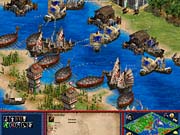
The Korean civilization is not as impressive in offensive power as, say, the Franks or Goths, but they do have strength and versatility. Their defensive capabilities are obvious, but they also get the full line of archers and pikemen. And although they lack paladins or champions, their halberdiers can deal with the former, and their strong mangonels can dispatch the latter. Add in the war wagon for support, and the Koreans reveal themselves to be a surprisingly formidable antagonist. In history, the Koreans often had to defend themselves by sea, and so in the game, they are equally strong on the water. Backing up the heavy turtle ship with fire ships and cannon galleons can create a lethal fleet that other civilizations would be hard-pressed to stop.
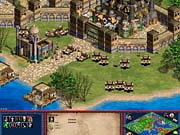
However, the Koreans are a somewhat ponderous civilization. They have no booming economic bonuses, and their stone-mining bonus lends itself not to attack but to defense. Thus, Koreans will be slow to mount effective armies, meaning they cannot support quick strikes, like the Huns and Franks can. Still, the Koreans are great at "turtling," meaning they can stake out a claim to land and resources and outlast the opponent with superior and plentiful defenses. The freely upgraded towers, war wagons, and mangonels create an extremely effective shield around Korean settlements. Greg Street further emphasizes the Koreans' penchant for defense by saying, "Upgrading from watchtowers to guard towers and ultimately to keeps can be hard to justify in a game with so many long-range siege weapons. Fortunately, for the Koreans it isn't an issue. Their towers automatically upgrade with each age. The jewel of the Korean towers is, of course, the bombard tower. Korean bombard towers do not get increased range (that's a Turk bonus, after all), but the Koreans can build bombard towers as soon as they research chemistry (other civs must spend 1200 resources). Korean bombard towers are a common sight in the late Imperial Age, and also make the civilization one of the best at deathmatch and probably the best at defend-the-wonder games." Unfortunately, this overwhelming advantage in tower building does not translate into a good tower-rushing strategy. Villagers now have a bonus to attack towers in the expansion pack, making the rushing strategy harder to execute.
This emphasis on towers does mean that Koreans who concentrate too much and too early on defense risk cutting themselves off from needed resources that other, quicker players can snatch up first. And their slow start means that Koreans are vulnerable to rushes from strong infantry and cavalry. Korean players should watch out for Mongols, Huns, Franks, Aztecs, and similar civilizations.
Yet, the power of the Koreans is hard to dispute, as Street illustrates in his final example, "One of the sneakiest things I have ever done as [the Korean civ] was to use my siege onagers to blast a tunnel through the forest almost to an enemy town. Then I proceeded to flatten everything I could reach. Since the enemy player could not get through the trees to stop me, he could only really respond with trebuchets. Trebs unpack slowly, and siege onagers flatten them. I think he was pretty unhappy."
Thus ends our look at the five new civilizations of the Age of Empires II expansion pack. In the next few weeks, we'll bring you a general preview of the game based on our experiences with the beta build. With the new civilizations and their unique capabilities, Age of Empires II: The Conquerors promises to be an even better and more fun game to play.
Got a news tip or want to contact us directly? Email news@gamespot.com
Join the conversation